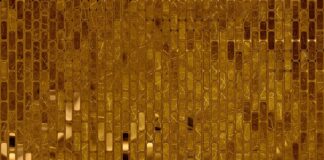Nanocrystals are small-scale crystalline structures, typically with dimensions at the nanoscale (1-100 nanometers). They possess unique properties and applications due to their small size, high surface area-to-volume ratio, and quantum effects. Here’s a comprehensive overview covering important aspects of nanocrystals technology:
Size and Structure:
Nanocrystals are solid materials with a crystalline structure and a size range of 1-100 nanometers. Their size and structure dictate their properties and functionality.
Quantum Effects:
At the nanoscale, quantum effects become prominent, affecting electronic, optical, and magnetic properties. These effects are crucial in nanocrystals’ applications in various fields.
Synthesis Methods:
Nanocrystals can be synthesized using various techniques, including chemical vapor deposition, sol-gel methods, precipitation, and ball milling. Each method yields nanocrystals with distinct properties.
Applications in Medicine:
Nanocrystals have gained significant traction in medicine, serving as drug delivery carriers, contrast agents for imaging, and diagnostic tools. Their small size allows precise targeting and delivery within biological systems.
Optoelectronics and Photonics:
Nanocrystals are widely utilized in optoelectronic devices such as LEDs, solar cells, and lasers. Their size-dependent optical properties enable efficient light emission and absorption, making them crucial in advancements in these technologies.
Catalysis and Energy Storage:
Nanocrystals play a vital role in catalysis, enhancing catalytic activity due to their increased surface area and reactivity. They are also employed in energy storage applications, like batteries and capacitors, due to their improved charge storage capacity.
Environmental Applications:
Nanocrystals are utilized in environmental remediation for pollution control, wastewater treatment, and soil remediation. Their properties make them efficient in breaking down pollutants and enhancing purification processes.
Material Reinforcement:
Incorporating nanocrystals into materials such as polymers, ceramics, and composites can significantly enhance their mechanical, thermal, and electrical properties. This reinforcement is critical for advanced materials used in aerospace, automotive, and structural applications.
Nanocrystals in Electronics:
Nanocrystals find applications in electronic devices, including transistors, memory devices, and conductive inks. Their small size and unique electrical properties enable high-performance electronics and flexible, printable electronics.
Challenges and Future Prospects:
Despite significant progress, challenges remain in achieving precise control over nanocrystals’ size, shape, and composition. Future prospects involve further understanding and control of nanocrystal properties for tailoring applications in emerging technologies.
Nanocrystals represent a promising field with vast potential in diverse applications, leveraging their size-dependent properties and quantum effects to revolutionize medicine, optoelectronics, catalysis, environmental remediation, and materials science. As researchers continue to delve into nanocrystal synthesis and applications, we can anticipate significant advancements and breakthroughs in the near future.
Nanocrystals, defined by their minute size and ordered atomic arrangement, boast unique attributes arising from quantum effects and high surface area-to-volume ratio. This scale allows them to exhibit distinctive electrical, optical, and magnetic properties compared to bulk materials. Synthesis methods encompass a range of techniques, including chemical vapor deposition, precipitation, and ball milling, each influencing the resulting nanocrystal properties. In medicine, nanocrystals find pivotal roles as drug delivery carriers, contrast agents in imaging, and tools for diagnostics. Their minute size facilitates precise targeting and delivery, enhancing therapeutic efficacy.
Furthermore, the optoelectronic and photonic realms benefit significantly from nanocrystals, deploying them in LEDs, solar cells, and lasers. These applications capitalize on size-dependent optical characteristics, ensuring efficient light emission and absorption. Catalytic processes and energy storage systems also harness nanocrystals, leveraging their enhanced reactivity and charge storage capabilities, respectively. Beyond these, nanocrystals are making notable strides in environmental applications, aiding in pollution control and remediation through efficient pollutant breakdown and removal. Integrating nanocrystals into various materials reinforces them, enhancing mechanical, thermal, and electrical properties. This reinforcement is especially vital in aerospace, automotive, and structural applications.
The electronics sector reaps benefits from nanocrystals as well, finding applications in transistors, memory devices, and conductive inks. Their small size and distinct electrical properties enable high-performance electronics and flexible, printable technologies. Despite significant progress, challenges persist, notably in achieving precise control over nanocrystal characteristics. Future prospects hinge on understanding and controlling these properties, enabling tailored applications in emerging technologies. With ongoing research and development, nanocrystals are poised to continue reshaping numerous domains, fostering groundbreaking innovations and advancements in the foreseeable future.
In this exciting frontier of nanotechnology, researchers and innovators grapple with challenges related to scalability, reproducibility, and uniformity in nanocrystal synthesis. Achieving consistent control over size, shape, and composition is essential for optimizing nanocrystal properties for diverse applications. Additionally, efforts are underway to enhance the stability and longevity of nanocrystals, ensuring their effectiveness over extended periods.
Nanocrystals hold the promise of revolutionizing drug delivery, allowing for targeted and controlled release of medications to specific areas in the body, thereby reducing side effects and improving therapeutic outcomes. In fields like renewable energy, nanocrystals contribute to the development of more efficient solar cells and batteries, advancing sustainable power generation and storage solutions. Moreover, their integration into flexible electronics opens up possibilities for wearable technology and bendable displays.
Ethical considerations regarding the use of nanocrystals, particularly in medicine, environmental remediation, and consumer products, are an essential facet of this evolving technology. Questions regarding the potential environmental impact and long-term safety implications must be thoroughly addressed through rigorous research and assessment.
The collaborative efforts of multidisciplinary teams, including materials scientists, chemists, physicists, biologists, and engineers, are vital in driving the advancements and breakthroughs in nanocrystals technology. Sharing knowledge, fostering interdisciplinary collaborations, and promoting responsible research and innovation will pave the way for realizing the full potential of nanocrystals in transforming various industries and improving the quality of life for humanity. As we continue to unlock the mysteries of nanocrystals and refine their applications, we can anticipate a future where these tiny structures play a central role in shaping a more sustainable, efficient, and technologically advanced world.
In conclusion, nanocrystals, characterized by their small size and unique properties at the nanoscale, represent a burgeoning field within nanotechnology. Their potential to revolutionize diverse industries, including medicine, renewable energy, and electronics, is evident. Despite existing challenges in synthesis and standardization, ongoing research and interdisciplinary collaborations are propelling this technology forward. Ethical considerations are paramount to ensure responsible deployment, especially in sensitive areas like healthcare and environmental remediation. With continued exploration and advancements, nanocrystals are poised to have a transformative impact, offering innovative solutions and propelling humanity into a future where precision and efficiency are paramount.














